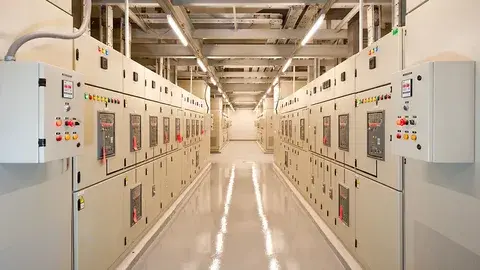Do You Need Gas Fireplace Repair? Here’s How to Tell
Table of Contents
ToggleGas fireplaces provide reliable comfort and ambiance, but when they malfunction, they can pose safety risks or inefficiencies. If you notice flickering flames, unusual odors, or unexpected shutoffs, it may be time to call a professional. In this article, you’ll learn how to determine whether you need gas fireplace repair.
Why Does Gas Fireplace Repair Matter?
Why is prompt repair important for a gas fireplace? A properly functioning gas fireplace ensures safe combustion, energy efficiency, and longevity of the unit. Ignoring issues can lead to gas leaks, carbon monoxide build-up, or damage to internal components such as valves, burners, and heat exchangers. In commercial or residential settings, failure can result in higher utility bills or costly replacements down the line. Ensuring that repairs are done correctly also preserves manufacturer warranties and reduces future service needs.
What Are the Most Common Problems That Trigger Repair?
Which issues typically signal a need for repair? Common problems include:
- Irregular or weak flame: Yellow or uneven flames often indicate blocked orifice or improper gas pressure.
- Pilot light failing or going out: A faulty thermocouple, sensor, or gas control valve can cause repeated outages.
- Gas odor or hissing sound: Suggests a potential gas leak, which requires immediate professional attention.
- Frequent cycling or shutting off: Caused by overheating, blocked vents, or faulty safety switches.
- Poor ignition or delayed start: Ignition module or control board issues can result in hesitation or misfires.
- Carbon monoxide detection: Elevated CO readings point to inadequate ventilation or combustion issues.
Technicians often find that clogged orifices, worn-out sensors, and valve failures are the root causes. Because gas fireplace repair involves sensitive components, diagnosing these issues early prevents escalation.
What Key Benefits Come from Professional Repair?
How does professional service benefit you?
- Enhanced safety: Technicians test for leaks and CO levels to prevent hazardous conditions.
- Improved efficiency: Proper adjustments ensure optimal fuel consumption and better heat output.
- Warranty preservation: Certified repair helps maintain warranty validity with manufacturers.
- Extended lifespan: Replacement of worn parts before failure helps avoid large-scale replacements.
- Peace of mind: Professionals ensure that all safety systems, sensors, and controls operate reliably.
As one industry expert stated,
“A gas fireplace inspected and repaired by a certified technician not only runs more safely, it also performs more reliably for years ahead.”
How Is the Role of a Technician Defined?
What does a qualified technician do during a repair? A certified technician undertakes a systematic inspection: checking connections, gas pressure, burner cleanliness, valves, igniters, sensors, and venting systems. They use diagnostic tools to measure CO levels, flame quality, and combustion efficiency. If parts are failing, the technician sources OEM replacements, and ensures secure installation. They also test post-repair to confirm that the fireplace meets safety codes. When conducting service, they may also inspect nearby insulation or venting cavities, especially in attics, to prevent other home systems from interfering. In some cases, if insulation removal or vacuuming is required near the fireplace cavity, workers may coordinate tasks like attic insulation removal Arlington TX or blown-in insulation removal Arlington to maintain airtight seals and optimal ventilation flow.
What Does Gas Fireplace Repair Cost?
How much should you expect to pay? Repair costs depend on labor, parts, complexity, and service region. Below is a representative pricing table (USD or converted locally) to guide your expectations.
| Repair Type | Typical Price Range | Notes / Disclaimers* |
|---|---|---|
| Thermocouple or sensor replacement | $100 – $200 | Doesn’t include tax or permit fees |
| Gas valve replacement | $250 – $450 | OEM valves cost more |
| Ignition or control board replacement | $200 – $500 | Depends on brand or model |
| Burner cleaning and tuning | $120 – $250 | Often part of regular maintenance |
| Venting or flue repair | $150 – $400 | May involve chimney or duct work |
| Leak detection or certification | $80 – $180 | Includes diagnostic testing |
*Prices are estimates and vary by region, service provider, and urgency. Always request a written quote before work begins.
In addition, if your repair involves accessing attic vents or insulation cavities adjacent to the fireplace chase, technicians might need to perform attic air quality insulation removal, attic insulation vacuum Arlington, or even commercial grade insulation removal vacuum work to assure proper air sealing and ventilation integrity.
What Key Features Should a High Quality Repair Service Offer?
What traits distinguish professional repair services?
- Certified technicians and licensing
- Use of OEM parts and warranties
- Advanced diagnostic tools (gas analyzers, digital manometers)
- Post-repair safety certification and testing
- Transparent pricing and written estimates
- Coordination with related home systems — e.g. integration with attic ventilation, insulation, or vent ducts. In regions like Arlington, you may even see repair services that tie in with attic insulation removal Arlington TX or blown-in insulation removal Arlington to ensure no interference with vent stacks or chase cavities. They may also perform attic air quality insulation removal or commercial-grade insulation removal vacuum to maintain integrity of building envelope.
Safety or Emergency
What should you do if you suspect a gas fireplace emergency? First, turn off the gas supply and the appliance immediately, and ventilate the area by opening doors or windows. Do not operate matches, lighters, or open flames. Evacuate occupants if you smell gas or detect carbon monoxide via alarm, and call emergency services or your gas utility provider. Do not attempt self-repair in a gas overdose scenario. Once the emergency is managed, contact a certified gas technician for a full inspection. Always install carbon monoxide detectors near fireplace areas to alert occupants in case of venting or combustion problems.
FAQs
What are typical questions about gas fireplace repair?
How often should a gas fireplace be serviced?
Annually is recommended, especially before the heating season begins, to clean, inspect, and test the system.
Can I repair the fireplace myself?
DIY repairs are strongly discouraged. Gas systems require technical training, licensing, and specialized tools. Improper repair can cause leaks or safety violations.
How long does a repair take?
Most repairs (sensor replacement, cleaning) take 1–2 hours. More extensive jobs (vent work, control board replacement) may require 3–5 hours or more.
Does insurance cover gas fireplace repair?
Coverage varies. If damage results from a covered peril (e.g. storm, fire), your policy may cover repairs. Routine maintenance is usually excluded.
When should a fireplace be replaced instead of repaired?
If the cost of repair is more than half the replacement price or if the unit is over 15–20 years old with multiple failing components, replacement may be more cost-effective.
Conclusion
Do you need gas fireplace repair? If you observe weak flame, pilot light problems, gas odor, frequent shutoffs, or carbon monoxide alerts, it’s time to call a professional. Prompt repair matters for safety, efficiency, and reliability. Expect parts and labor costs varying by complexity, and be prepared for potential work in adjacent attic or vent spaces sometimes requiring tasks like attic insulation removal Arlington TX, blown-in insulation removal Arlington, attic air quality insulation removal, attic insulation vacuum Arlington or commercial-grade insulation removal vacuum to preserve airflow and safety. Always prioritize emergency response when gas or CO is suspected, demand certified technicians, and request a written quote. With proper service, your fireplace will perform safely, efficiently, and reliably long term.
Read More: Our Services
- Arts & Style (100)
- Automobile (288)
- Business (5,740)
- Business and Entrepreneurship (168)
- Career Development (55)
- Climate & Environment (26)
- Creative (34)
- Culture (1,562)
- Beauty (284)
- Skincare (243)
- Cultural Studies (75)
- Digital Life (73)
- Energy Healing (31)
- Fashion (1,040)
- Clothing (697)
- Fashion Design (234)
- Philosophy (7)
- Morality (6)
- Religion (17)
- Sports (116)
- Beauty (284)
- Digital Marketing (343)
- DIY and Crafts (15)
- Economics (8)
- Education (1,285)
- Entertainment (198)
- Faith & Spiritual (10)
- Fashion and Beauty (155)
- Finance and Money Management (211)
- Fitness and Exercise (32)
- Food and Drink (171)
- Game (142)
- Health and Wellness (1,099)
- Home and Garden (390)
- Immigration (1)
- Law (144)
- Lifestyle (1,384)
- Health (685)
- Home (390)
- Architecture (100)
- Interior Design (216)
- Rental Property (27)
- Pets (76)
- Relationships (70)
- Restaurants (19)
- Literature (7)
- Media (273)
- Packaging (41)
- Politics (1)
- Real Estate (257)
- Science and Nature (14)
- SEO (141)
- Social Media Marketing (51)
- Software Development (227)
- Sports and Fitness (44)
- Technology (854)
- Artificial Intelligence (239)
- Blockchain (61)
- Data Science (113)
- Gadgets (145)
- Security (142)
- Transportation (111)
- Travel & Tourism (743)
- Uncategorized (2,016)
- World (62)
- International (59)
- Expert Migration Agents in Brisbane: Trusted MARA Professionals Near You
- How to Style Diamond Earrings for Any Occasion

- KYC Verification: Strengthening Financial Integrity Through Identity and Transaction Monitoring

- Absorb More Comfort with Towel Hub’s Soft Wholesale Towels

- Latest Nexa Vape Flavors and Pods: A Realistic Look at What’s New


How Electrical Panels Improve Industrial Operations

The Secret of Time Savings of The Dubai Expat to the Laundry Near Me

How Custom Corrugated Boxes Help Build a Best Brand Presence?

How Can You Find Reliable Key Duplication Services in San Francisco?

How Can You Find Reliable Key Duplication Services in San Francisco?

Do You Need Gas Fireplace Repair? Here’s How to Tell

What Are the Health Benefits of Duct Cleaning?
